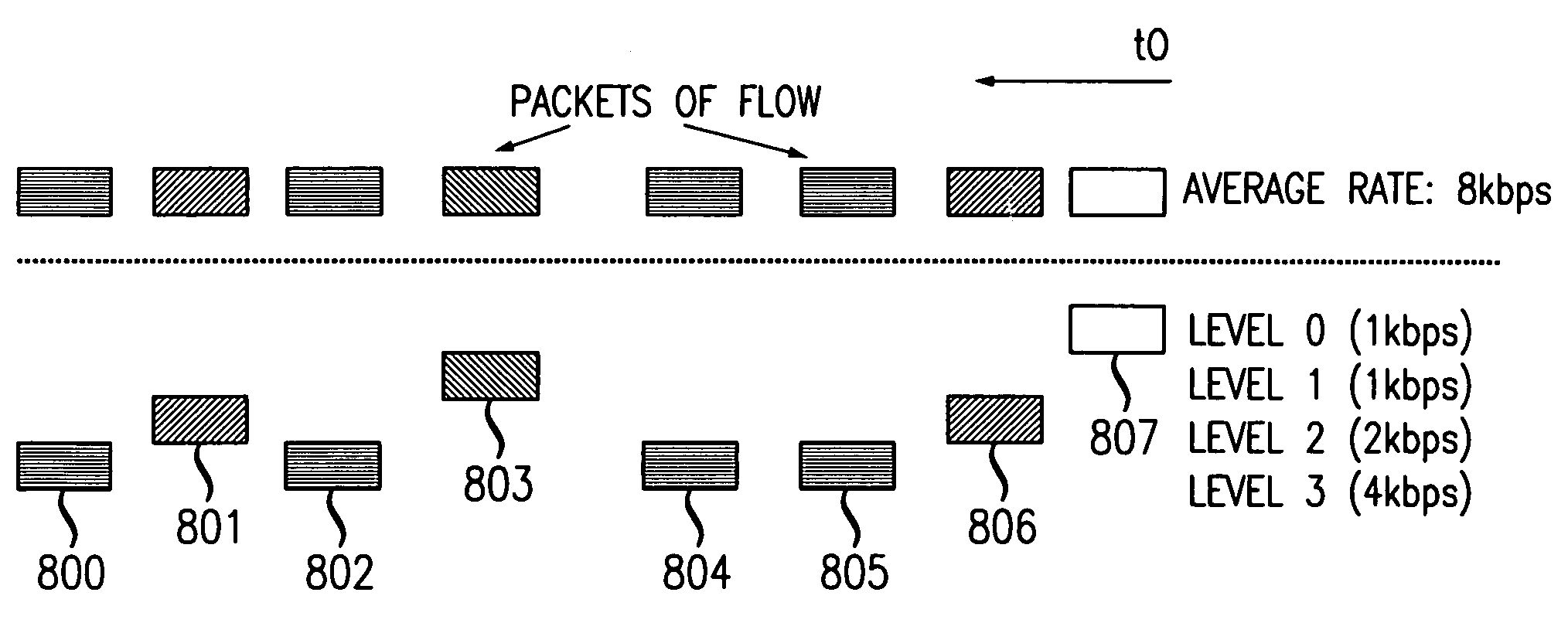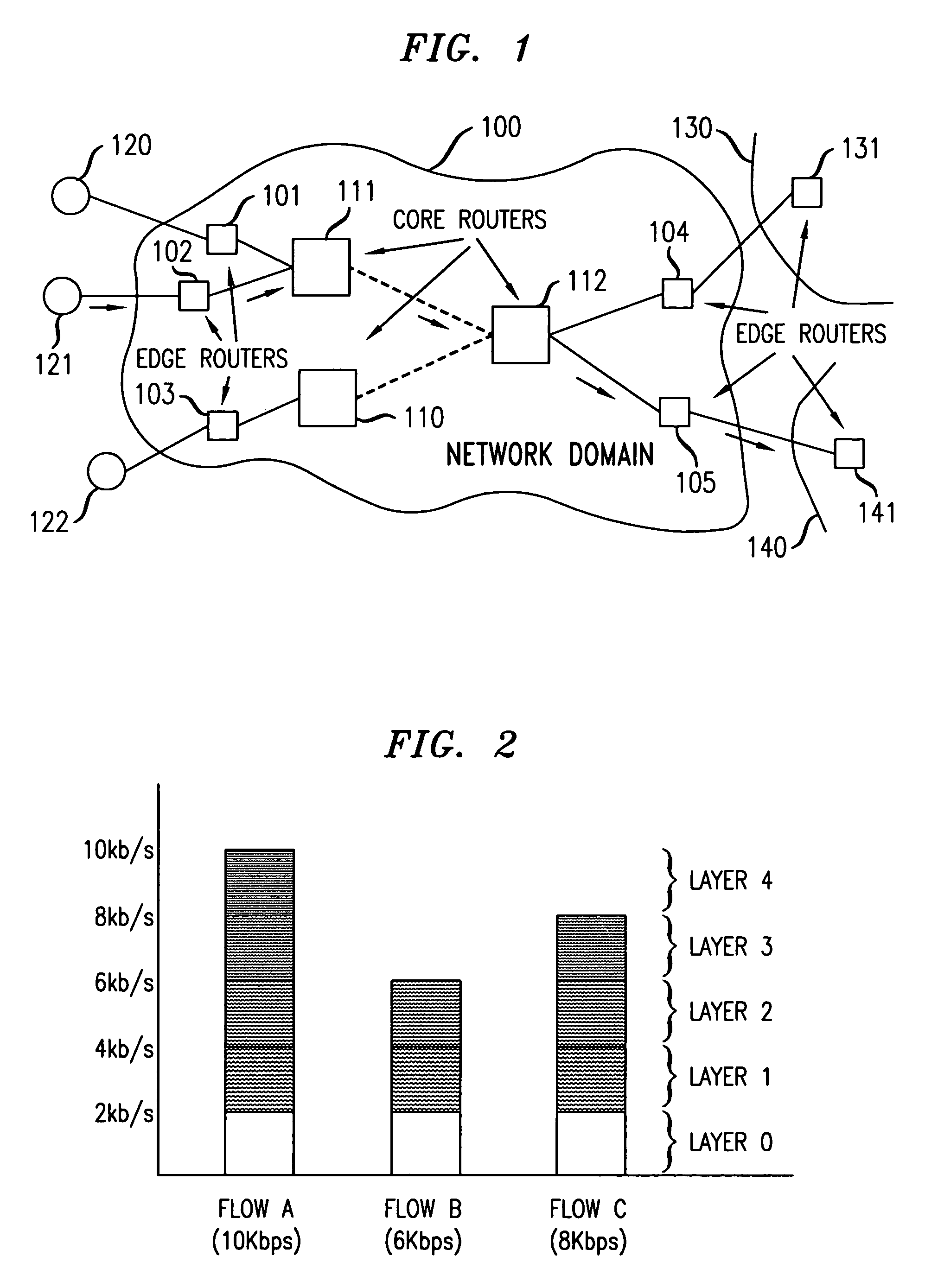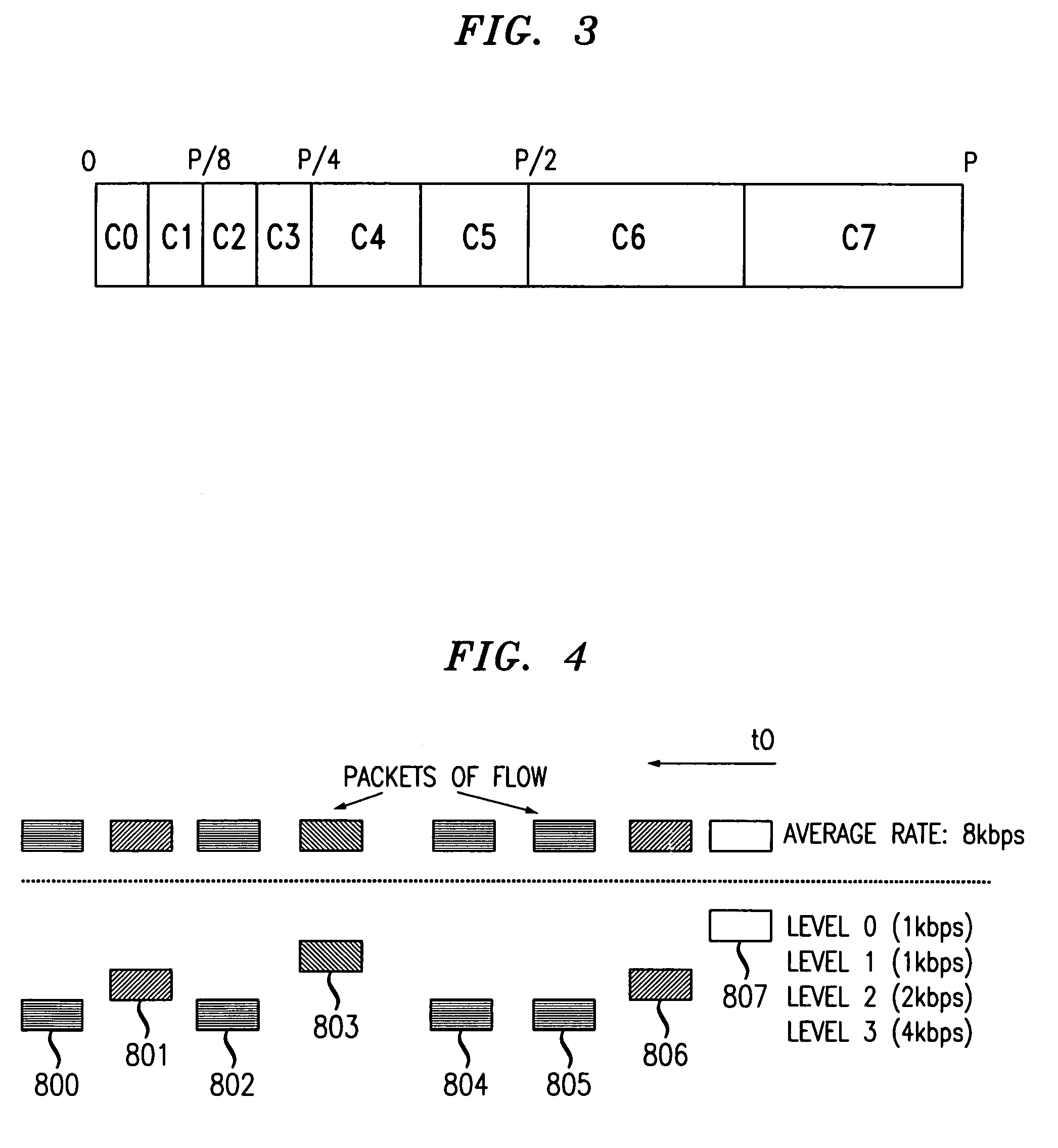Technique for bandwidth sharing in internet and other router networks without per flow state record keeping
a router network and state record keeping technology, applied in the field of bandwidth sharing in internet and other router networks without per flow state record keeping, can solve the problems of large hardware implementation difficulties, and large hardware implementation difficulties, and achieves a bit of hardware implementation. , the effect of simple and convenient hardware implementation
- Summary
- Abstract
- Description
- Claims
- Application Information
AI Technical Summary
Benefits of technology
Problems solved by technology
Method used
Image
Examples
Embodiment Construction
[0018]In accordance with the present invention, a packet layering and buffer management scheme emulates the fair sharing of WFQ, but avoids packet classification and per-flow state operations in the core switches or routers. With the present invention, core switches or routers still perform FIFO scheduling, but with more sophisticated buffer management. Implementation complexity is much lower compared with a per-flow queueing system.
[0019]The network model or topology used with the present invention is the same as that used in CSFQ and in Differentiated Services: namely, a network 100 comprised of edge routers 101–105 and core routers 110–112. Some edge routers, such as edge routers 101–103, connect network 100 to user locations 120–122. Other edge routers, such as edge routers 104 and 105, connect network 100 to edge routers 131 and 141 in other networks 130 and 140, respectively. Core routers 110–112 interconnect the edge routers within network 100, but have no direct connections ...
PUM
 Login to View More
Login to View More Abstract
Description
Claims
Application Information
 Login to View More
Login to View More - R&D
- Intellectual Property
- Life Sciences
- Materials
- Tech Scout
- Unparalleled Data Quality
- Higher Quality Content
- 60% Fewer Hallucinations
Browse by: Latest US Patents, China's latest patents, Technical Efficacy Thesaurus, Application Domain, Technology Topic, Popular Technical Reports.
© 2025 PatSnap. All rights reserved.Legal|Privacy policy|Modern Slavery Act Transparency Statement|Sitemap|About US| Contact US: help@patsnap.com



